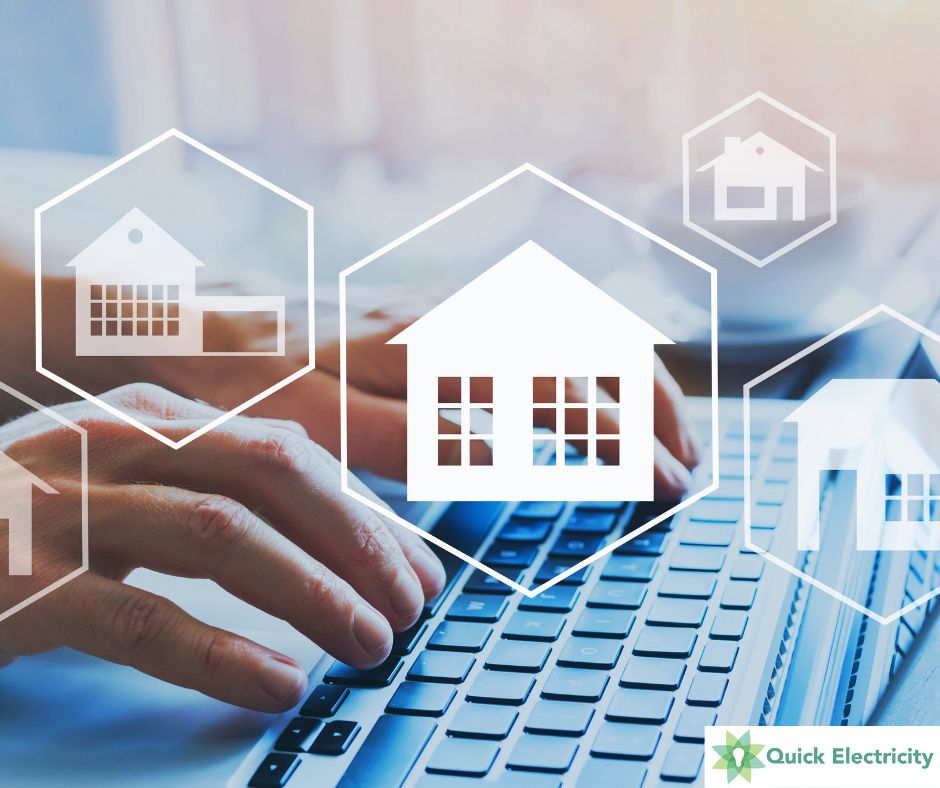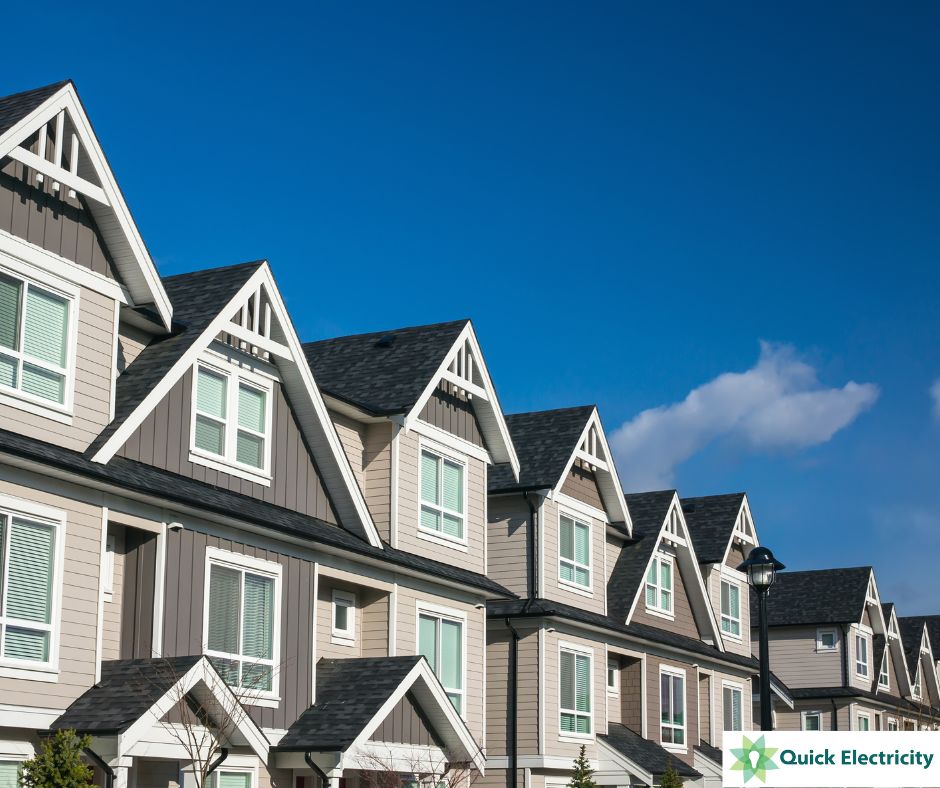Get exclusive insight into some of Texas’ best and most affordable electricity rates for landlords and property management companies.
Commercial Electricity Plans for Landlords and Property Management Companies
There are three main ways to set up the electricity service in a rental property:
- Tenants choose their electricity provider and pay their power bills directly.
- The landlord chooses an electricity provider and charges the power bills to tenants, typically with a markup.
- The landlord chooses an electricity provider and includes energy costs as part of the rental rate without charging tenants for electricity as a separate service.
In Texas, landlords who assume control of electricity bills for their properties are allowed to add a markup. However, all internal billing must follow the regulations established by the Public Utility Commission of Texas (PUCT). If you live in another state, the rules for electricity sub-billing can vary depending on the requirements of the local utility authority.
There are also landlords who offer “all bills paid” apartments, where tenants are not billed based on their monthly consumption. Instead, the property has a master meter and all electricity costs are paid by the owner. However, this doesn’t mean that tenants get free electricity since energy costs are considered when establishing rental rates.
Electricity Plans for Apartment Buildings
Multifamily buildings can be divided into three types of areas with different energy needs.
- Rented apartments
- Vacant apartments
- Common areas
Common areas are always managed by the owner, but apartment occupancy is constantly changing. For this reason, multifamily buildings require a flexible electricity service that can adapt to tenant turnover.
Rented Apartments
There are three possible scenarios for rented apartments, depending on how the billing procedure is set up:
- Individual electricity plans: If each apartment has an independent power meter and the lease contract allows it, tenants can choose their own electricity plans. In this case, all power bill payments are handled directly between tenants and retail electricity providers (REP).
- Mastered-metered property with submeters: Some apartment buildings have a master meter that generates a single power bill for the entire property. The landlord then uses internal submeters to bill each apartment individually. However, tenants cannot enroll in direct contracts with electricity providers.
- Apartments with all bills included: Some master-metered properties have no internal billing. Instead, the owner factors energy bills into the overall rental rate, which means utility costs are included in your monthly rent.
If your multifamily building has an independent power meter for each apartment, your electricity provider may offer a commission for every tenant enrolled with them. These commissions represent an extra income that can help you cover other building expenses.
Vacant Apartments
The energy consumption of vacant apartments is minimal but not zero. When showing these units to potential tenants, property managers will want to keep a comfortable temperature and adequate lighting. Depending on weather conditions, vacant apartments may also require space heating and cooling to prevent property damage:
- Space heating may be required to prevent pipe freezing during winter.
- Air conditioning and space heating control temperature and humidity levels. Keeping humidity low is critical to preventing mold growth.
- Many construction materials emit volatile organic compounds (VOC) and other chemicals, especially when they are new. Vacant apartments need ventilation to prevent the accumulation of these substances in indoor air.
Typically, a landlord or property management company will have a Continuous Service Agreement (CSA) for vacant apartments. This agreement ensures that electricity for landlords and property managers remains consistent; if a tenant leaves an apartment, the subsequent power bills are automatically assigned to the property owner.
There are also non-continuous service agreements (NON-CSA), where the electricity service for an apartment can be switched on and off as requested by the owner. A NON-CSA can provide energy savings when apartments are vacant, but property managers must be careful not to interrupt the power supply at times when heating and cooling are critical.
Common Areas
Common areas are always controlled by the landlord or property management company, regardless of building occupancy. These spaces can receive electricity under a common area agreement (CAA), which is very similar to a small business electricity plan. Typically, the energy costs of common areas are split among all tenants.
Some electricity providers offer an online dashboard for landlords, where they can manage electricity plans for common areas and individual apartments. These dashboards include functions such as energy monitoring, automatic consumption alerts, and bill payments.
Electricity Plans for Single-Family Rentals and Duplexes
Single-family properties are fully occupied by the tenant when rented, which means there is no need for a common area agreement (CAA). Typically, the tenant is allowed to choose an electricity plan for the entire property. However, some landlords prefer to manage power bills directly, choosing their electricity providers and sub-billing their tenants.
Duplex, triplex, and fourplex properties can be managed with a similar approach since they are divided into independent living units. However, these properties often have shared areas such as laundry rooms and garages. The common areas will typically have a separate power bill that is split among tenants, similar to multifamily buildings.
Energy Incentive Programs for Multifamily Buildings
Electric utility companies often offer financial incentives for customers who implement energy efficiency measures, and some programs are designed specifically for apartment buildings. Here are the largest energy incentive programs for multifamily buildings in Texas:
| Program Name | Location | Description |
| Oncor Multifamily Incentive Program | Dallas-Fort Worth and surrounding areas | The program offers incentives for energy efficiency projects in multifamily buildings with more than four units. The maximum incentive is $150,000 per project. |
| CenterPoint Energy Multifamily Programs | Greater Houston metropolitan area, excluding areas served by other utility companies | CenterPoint has three subprograms for multifamily buildings, with incentives of up to $1,250 per dwelling unit.
Multi-Family Direct Install: Incentives for LED lighting, kitchen faucet aerators, bathroom faucet aerators, low-flow showerheads and water heater pipe wrap. Multi-Family High Efficiency New Construction: Incentives for new buildings that achieve certification under recognized programs such as LEED or ENERGY STAR. Multi-Family Water and Space Heating: Incentives for non-electric water heaters that meet federal efficiency standards and local building codes. |
| Austin Energy Multifamily Rebates | Austin | The program offers incentives for energy audits and building upgrades such as attic insulation, duct sealing, HVAC replacements, HVAC tuneups, LED lighting retrofits, smart thermostats and window upgrades.
Each measure has its own incentive rate, and the maximum combined incentive is $300,000 per customer site. |
| CPS Energy Multifamily Program | San Antonio | This program is part of the Sustainable Tomorrow Energy Plan (STEP) by CPS Energy. STEP offers incentives for energy efficiency measures such as insulation, HVAC upgrades, smart thermostats and LED lighting.
The CPS Energy Multifamily Program offers incentives for apartment buildings with at least five units that meet one of the following requirements: 1) Owned and operated by a 501(c)3 non-profit 2) Having at least 25% of dwelling units occupied by tenants who receive some form of low-income assistance. |
These energy incentive programs cover multifamily buildings in the five largest cities in Texas. However, you can look for energy incentive programs anywhere in the US by visiting the Database of State Incentives for Renewables and Efficiency (DSIRE).
In addition to the incentives listed above, Texas offers a statewide property tax exemption for renewable energy systems in residential, commercial, and industrial buildings. Renewable energy systems also qualify for a 30% federal tax credit nationwide.
In 2022, the Inflation Reduction Act also introduced nationwide rebates for energy efficiency upgrades in single-family and multi-family buildings. However, keep in mind that these programs depend on state-level implementation, which means their availability can vary by location:
- Single-family homes can qualify for a rebate of up to $4,000 based on their demonstrated energy savings.
- Multi-family buildings can qualify for a rebate of up to $4,000 per dwelling unit, up to a maximum incentive of $400,000 per building.
The Solar Energy Industries Association (SEIA) has an excellent summary sheet that describes all the energy tax credits and rebates introduced by the Inflation Reduction Act.
Contact Quick Electricity About Electricity Plans for Property Managers and Landlords
At Quick Electricity, we understand the unique energy needs of property managers and landlords. Whether you’re looking to compare rates, set up a Continuous Service Agreement, or explore energy-saving incentives, let us assist you.


